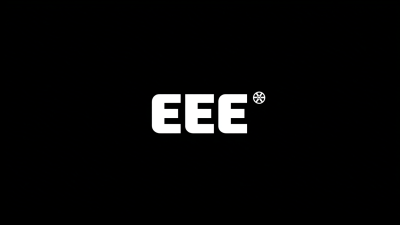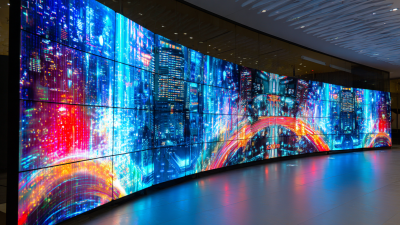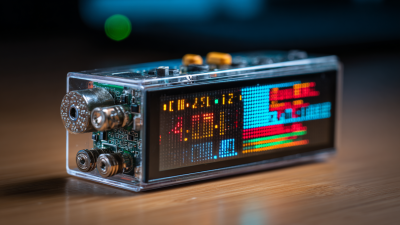Selecting the appropriate Character LCD Display for your project can significantly impact the functionality and user experience of your electronic design. According to a recent market analysis by Research and Markets, the global demand for LCD displays, particularly character types, is expected to grow at a CAGR of 4.5% from 2023 to 2028, driven by advancements in technology and increasing incorporation in consumer electronics. Character LCD displays are favored for their simplicity and low power consumption, making them ideal for a wide range of applications, from basic user interfaces to complex information systems. Understanding the variety of options available—including screen size, resolution, and backlight features—is essential to making an informed decision that meets both technical requirements and budget constraints. In this blog, we will delve into critical considerations that will guide you in choosing the right Character LCD Display for your next project.

When embarking on a project that requires a character LCD display, it's imperative to understand the variety of options available in the market. Character LCDs primarily come in two common types: alphanumeric displays, which can show letters and numbers, and graphic displays, which can represent images and custom characters. According to a report by MarketsandMarkets, the global LCD market is expected to reach a staggering $150.34 billion by 2026, showcasing the growing demand for these displays across various industries.
In addition to the different types, it's crucial to consider the size and resolution of the LCD. Character LCDs usually range from 8x2 to 40x4 configuration matrices, catering to diverse design requirements. A study by Research and Markets points out that the rising adoption of LCD displays in consumer electronics and automotive sectors is driving an increased interest in these configurations. Understanding the capabilities and limitations of each type will significantly influence the effectiveness of your project and ensure you select the display that best meets your needs.
When selecting the right character LCD display for your project, several key factors must be carefully considered. The first is the screen size. According to a report by DisplaySearch, the demand for 16x2 and 20x4 character LCDs has surged in recent years due to their balance between visibility and compactness, making them suitable for various applications from embedded systems to advanced consumer electronics. Furthermore, the choice between alphanumeric and graphic options can significantly influence the user interface, as organizations are increasingly looking for displays that enhance usability and readability.

Another crucial aspect is the display's viewing angle and contrast ratio. Research from the International Display Manufacturing Conference indicates that a wider viewing angle improves accessibility in cases where multiple users might need to see the display simultaneously. Additionally, maintaining a high contrast ratio is vital, as it directly impacts readability under different lighting conditions. Failing to address these factors could lead to user frustration and ultimately reduce the effectiveness of the display in your project, which underscores the importance of thorough evaluation during the selection process.
When selecting a character LCD display for your project, one of the most critical considerations is its compatibility with your microcontroller or development board. Before making a decision, verify the communication protocol your microcontroller supports, such as I2C, SPI, or parallel connections. Each display type has unique interfacing requirements, so understanding how your microcontroller transmits data is essential. This ensures seamless integration and minimizes the risk of compatibility issues down the line.
Another vital aspect is the voltage requirements of both your microcontroller and the LCD display. Most character LCDs operate at 5V, while some microcontrollers may work at 3.3V. In such cases, using level shifters or finding a display that supports lower voltage can prevent damage to your components and ensure reliable performance. Additionally, always refer to the manufacturer's datasheets, as they provide invaluable information regarding pin configurations and wiring diagrams, aiding in a successful connection with your project.
This bar chart illustrates the compatibility scores of various character LCD display types with microcontrollers. A higher score indicates better compatibility, aiding developers in making informed choices for their projects.
When selecting a character LCD display for your project, it's essential to consider several key parameters, particularly size, resolution, and backlight options. The size of the display can significantly impact the overall usability and integration within your project.
 Larger displays can offer better readability and more information at a glance, while smaller displays may suit compact devices where space is limited.
Larger displays can offer better readability and more information at a glance, while smaller displays may suit compact devices where space is limited.
Resolution also plays a critical role in display performance. Higher resolutions deliver sharper text and crisper visuals, making your project more appealing and user-friendly. Additionally, the choice between different backlight technologies, such as LED or MiniLED, can enhance visibility and color accuracy. LED backlighting is known for its efficiency and longevity, while MiniLED offers improved contrast and deeper blacks, making it a compelling option for projects that require high visual fidelity.
By carefully weighing these parameters, you'll ensure that the character LCD display you choose not only fits the technical requirements of your project but also enhances the end-user experience.
When selecting a character LCD display for your project, budget considerations play a crucial role. With fiscal constraints impacting many sectors, including healthcare and public finance, it's essential to align your display choice with your financial limitations. A thorough understanding of your budget will help you identify displays that not only fit your needs but also avoid overspending. Exploring cost-effective alternatives, such as smaller displays or simplified features, can lead to significant savings while still meeting your project's requirements.
In today's environment, characterized by tight budgets and tough economic choices, it's crucial to prioritize functionality and durability in your selection process. Assess various vendors to find the right balance between quality and affordability. Careful comparison of price points against the essential features can help you make informed decisions. By employing strategic financial planning in your project, you can foster a practical approach to choosing the most suitable character LCD display without sacrificing your project's ambitions.
| Display Type | Screen Size | Resolution | Price Range (USD) | Typical Application |
|---|---|---|---|---|
| 16x2 Character LCD | 80mm x 36mm | 16x2 | $5 - $10 | DIY Projects, Simple Interfaces |
| 20x4 Character LCD | 100mm x 60mm | 20x4 | $10 - $15 | Industrial Applications, Equipment Monitoring |
| 16x4 Character LCD | 80mm x 36mm | 16x4 | $8 - $12 | Text-Based User Interfaces |
| Graphic LCD (128x64) | 100mm x 70mm | 128x64 | $15 - $25 | Graphs, Custom Graphics Display |
| OLED (128x64) | 70mm x 35mm | 128x64 | $20 - $35 | Portable Devices, Wearable Tech |






